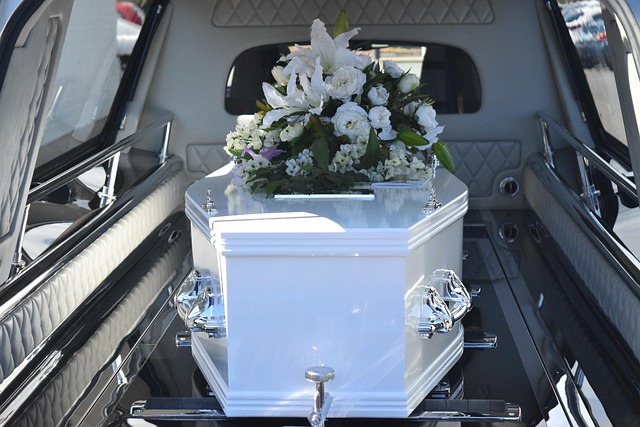What To Know When Arranging a Funeral
Arranging a funeral can be an emotionally challenging process. Understanding your options for burial, cremation, or memorial services, as well as associated costs and legal requirements, can help make the process smoother. Planning ahead and seeking guidance from professional funeral services ensures that decisions reflect personal wishes and cultural or religious traditions.

Losing someone often brings a rush of emotions and urgent decisions. In Australia, there are practical steps that must happen alongside personal and cultural rituals. Knowing who has legal authority to make arrangements, what paperwork is required, and how to coordinate with local services in your area can reduce stress. Whether you work with a funeral director or handle elements yourself, a clear plan helps you honour the person’s life while meeting regulatory requirements across your state or territory.
Funeral planning: where to begin?
Start by confirming the person’s wishes. Check any will, advance care directive, or documented preferences about burial, cremation, music, readings, or religious rites. If no wishes are recorded, the next of kin or an authorised decision maker typically guides choices. Clarify who will speak at the service and who will manage logistics such as venue bookings, notices, and transport.
Early paperwork is important. A medical practitioner or coroner supplies documentation needed to register the death with your state or territory registry of Births, Deaths and Marriages. If you choose to engage a funeral director, they can coordinate forms and timing. Families can also manage some or all tasks themselves, provided they follow local regulations. Consider the service style you want: a traditional chapel gathering, a community hall service, a graveside ceremony, or a simple committal with a later memorial.
Arranging a funeral: step-by-step
Begin with the essentials. Confirm the place of care for the person who has died and discuss timing for viewing or visitation if that is part of your customs. Choose a celebrant, clergy member, or a family led format. Select a venue that suits expected attendance and accessibility needs, and consider livestreaming for those who cannot travel. Decide on music, readings, photos, and eulogies, and ask contributors early so they have time to prepare.
Next, address logistics. Book the cemetery, crematorium, or other location as needed. For cremation, additional forms and permits may be required under state rules. Choose a coffin, casket, or shroud in accordance with cemetery or crematoria policies, and plan transport for family and pallbearers. Prepare an order of service, arrange flowers if desired, and draft a death or memorial notice. After the service, think about catering, a condolence book, and ongoing support for those who are grieving.
Burial options in Australia
Families can choose from several forms of interment. Traditional burial involves a graveside committal with a headstone or plaque. Cremation is common and can be paired with a chapel service or conducted directly with a later memorial. Direct cremation offers a simple pathway for those who prefer a private farewell and a separate gathering when ready. Some cemeteries also offer mausoleums or crypts for above ground interment.
Natural burial is available in selected cemeteries that support minimal impact practices, such as biodegradable coffins or shroud burial and native vegetation instead of formal landscaping. When cremation is chosen, ashes can be interred in a cemetery niche, buried in a family plot, kept at home, or scattered. Rules for scattering on public land, beaches, or waterways vary by council or managing authority, so check local guidance in your area before making plans.
Cultural and faith traditions influence many decisions. Some communities have specific rites around washing, wrapping, and timing of burial, while others emphasise storytelling and music. If you are working with clergy or a cultural leader, they can outline requirements that align with local policies. For private property burials or home based vigils, obtain permissions where required and confirm that transport and care follow public health regulations.
Practical considerations can make the day smoother. Nominate someone to coordinate arrivals, seating, and the procession. Arrange microphones, speakers, and a photo slideshow with backups on a USB drive. Consider accessibility for wheelchair users and parking for older relatives. Keep personal items like jewellery or medals secure and clearly note whether they should remain with the person or be returned to family after the service.
Planning ahead can ease decision making. Discuss preferences with loved ones and record them in writing. Prearranged choices about music, readings, and the preferred resting place can be a guide when the time comes. Even a short list of what matters most can help families focus on a meaningful farewell rather than last minute logistics.
If you are unsure about any step, ask local services for their process and typical timelines. Requirements can differ between New South Wales, Victoria, Queensland, and other jurisdictions, particularly for cremation permits, burial authorisations, and the registration of death. Keeping copies of all documents and notes of key conversations helps ensure accuracy when ordering certificates or managing estates later.
A thoughtful approach balances respect, practicality, and the wishes of the person who has died. With clear roles, well prepared details, and supportive professionals where needed, families can create a ceremony that feels authentic and considerate of local rules and customs in their area.




